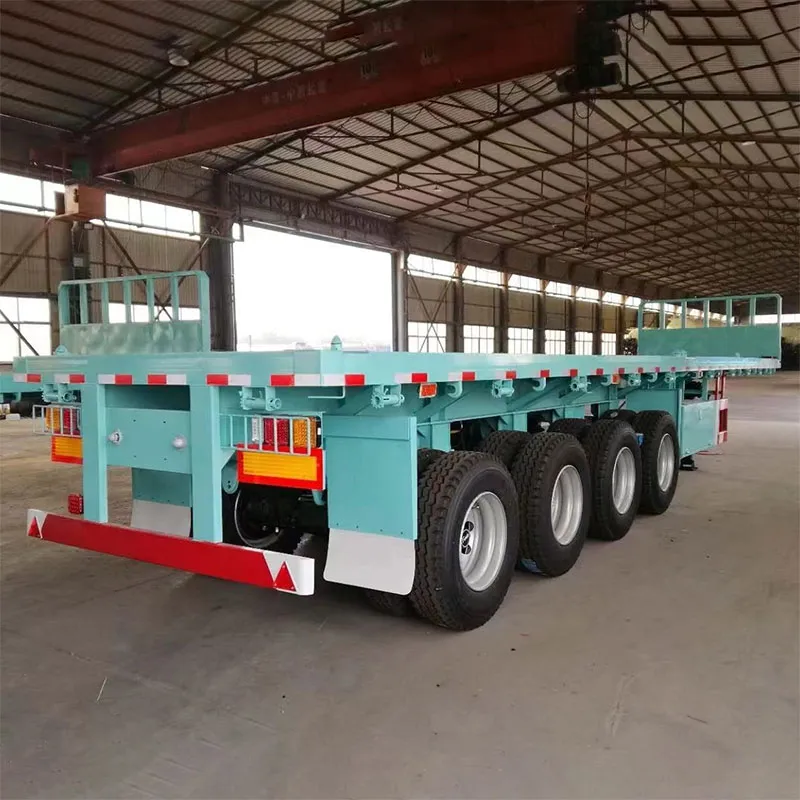The Versatility and Advantages of Flatbed Semi Trailers
2024-07-31
Introduction
Flatbed semi trailers are a cornerstone of the transportation and logistics industry. Known for their versatility and efficiency, these trailers are crucial for transporting a wide range of goods. In this blog, we will explore the key features, benefits, and applications of flatbed semi trailers.
Key Features of Flatbed Semi Trailers
1. Open Platform Design: Flatbed trailers have an open platform design without sides or a roof, allowing for easy loading and unloading from any angle. This design is ideal for oversized or irregularly shaped cargo.
2. High Weight Capacity: These trailers are built to handle heavy loads, often with a capacity ranging from 40,000 to 80,000 pounds. The robust construction ensures safe and reliable transportation of heavy machinery, construction materials, and other substantial items.
3. Multiple Axles: Flatbed trailers often come with multiple axles to distribute the weight of the load evenly. This feature enhances stability and reduces the risk of overloading any single axle.
4. Variety of Sizes: Available in various lengths and widths, flatbed trailers can be customized to meet specific transportation needs. Common lengths include 48 and 53 feet, while widths typically range from 8 to 8.5 feet.

Advantages of Using Flatbed Semi Trailers
1. Versatility: The open design of flatbed trailers makes them suitable for transporting a wide range of goods, including lumber, steel coils, pipes, and heavy equipment. They can also handle oversized and oddly shaped loads that might not fit in enclosed trailers.
2. Ease of Loading and Unloading: With no sides or roof to contend with, loading and unloading flatbed trailers is straightforward. Forklifts, cranes, and other loading equipment can access the cargo from any direction, reducing loading times and labor costs.
3. Flexibility: Flatbed trailers can be used in various industries, including construction, agriculture, and manufacturing. Their adaptability makes them a go-to solution for many logistics challenges.
4. Cost-Effectiveness: Due to their simple design and ease of maintenance, flatbed trailers often have lower operating costs compared to other types of trailers. They also require less time for loading and unloading, which can lead to savings in labor costs and increased efficiency.
Applications of Flatbed Semi Trailers
1. Construction Industry: Flatbed trailers are essential for transporting construction materials such as steel beams, concrete pipes, and scaffolding. Their ability to handle heavy and oversized loads makes them ideal for construction projects.
2. Agriculture: Farmers use flatbed trailers to transport large equipment, hay bales, and other agricultural products. The open design allows for easy loading of bulky items.
3. Manufacturing: Flatbed trailers are used to transport large machinery and industrial equipment from manufacturing plants to their final destinations. The trailers' high weight capacity ensures safe delivery of heavy loads.
4. Energy Sector: In the energy sector, flatbed trailers are employed to move wind turbine components, solar panels, and other renewable energy equipment. Their flexibility and capacity are crucial for handling these large and heavy items.
Conclusion
Flatbed semi trailers offer unmatched versatility and efficiency in the transportation industry. Their open design, high weight capacity, and ease of loading make them indispensable for various applications, from construction to agriculture. As logistics needs continue to evolve, flatbed trailers will remain a vital tool for transporting goods safely and efficiently.


